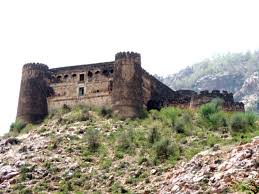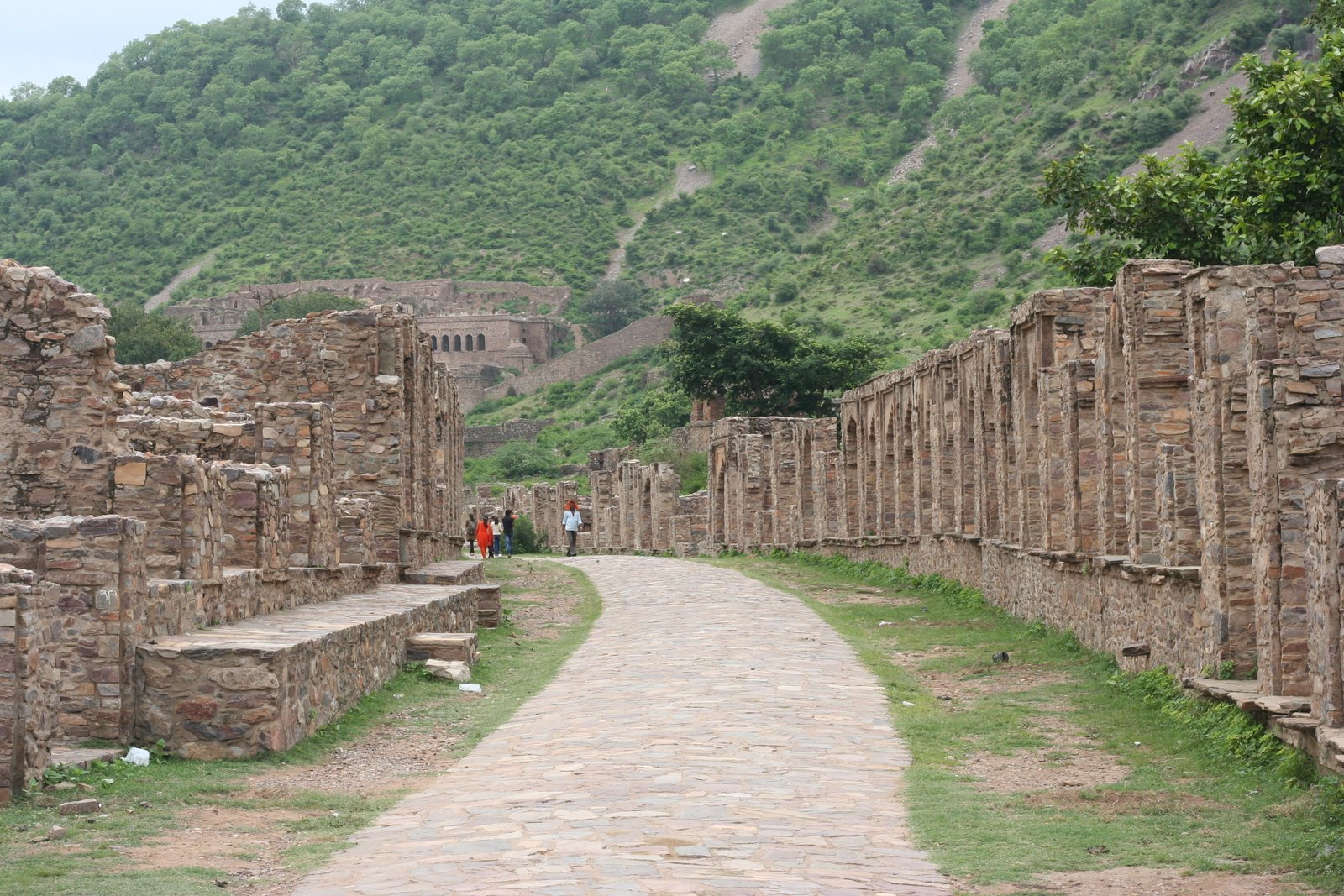ATTRACTIONS IN AJABGARH AND BHANGARH
Ajabgarh & Bhangarh is a ruined town in the Alwar district of the state of Rajasthan, India, most famous for its historical ruins. It is said to be a haunted place. Archaeological Survey of India (ASI) has put up a signboard by the main gate stating (among others): “Entering the borders of Bhangarh before sunrise and after sunset is strictly prohibited.” The reason for this may be that there can be wild animals and it could be unsafe because there is no artificial lighting. Bhangarh is at the edge of the Sariska Tiger Reserve.
Bhangarh is a place between Jaipur and Delhi in Rajasthan state of India. Bhangarh is known for its ruins, but still worth a visit; the place is beautiful and tranquil. What remains though, is a shadow of a once beautiful kingdom.

Passing by Bhangarh, banyans and temples dot the landscape and one chhatri can be seen up on the hill. The most remarkable are the temples of Gopinath, Shiva (Someshwar), Mangla Devi and Keshava Rai. Other more or less preserved buildings are e.g. shops along the main road, several havelis, a mosque, and a palace. The palace was protected by two inner fortifications across the valley. The town is separated from the plain by ramparts with five gates. Bhangarh is also a pre-historic site.
This town was established in 1573 (VS 1631) during the rule of Raja Bhagwant Das as the residence of his second son Madho Singh. Madho Singh was younger brother of Emperor Akbar’s General Man Singh I of Amber. Madho Singh participated in many campaigns with his father and brother. The next ruler of Bhangarh was his son Chhatr Singh. Bhangarh slowly declined after Chhatr Singh’s violent death in 1630. Near Ajabgarh was founded by Ajab Singh, the son of Chhatr Singh. When Mughal Empire became weaker after the death of Aurangzeb, Jai Singh II attached Bhangarh to his state by force in 1720. After this Bhangarh diminished in population, and when the famine of 1783 fell on the land the town was abandoned, and has remained a ruin ever since.

It is said that the city of Bhangarh was cursed by the Guru Balu Nath, causing the towns evacuation. Balu Nath sanctioned the establishment of the town but said: “The moment the shadows of your palaces touch me, the city shall be no more!” Ignorant of such foreboding, one ambitious descendant raised the palace to such a height that its shadowed Balu Nath’s forbidden retreat and thus the town was devastated as prophesied. The small samādhi where Balu Nath is said to lie buried is still there.
The other myth is as follows: The charm of princess of Bhangarh Ratnavati was said to be matchless in all of Rajasthan. Being eighteen years old, the princess started getting matrimonial offers from other states. In the same region there lived a tantrik, a magician well versed in the occult, named Singhia who was desperately in love with the princess knowing that he would never be allowed to even see her, let alone meet her. One day, he saw the princess’ maid in the market buying scented oil for her. Seeing this, he got an idea by which he could meet the princess. He used his black magic and put a spell on the oil which would hypnotize the princess by her merely touching the oil, and she would surrender herself. The princess foiled this plan though. She had seen the tantrik enchanting the oil, and she therefore threw it away, whereupon the flagon rolled over a stone. As soon as the oil touched the stone, it started rolling towards the wicked tantrik and crushed him. While dying, Singhia cursed the palace with the death of all who dwelt in it, without any rebirth in their destinies. The very next year there.